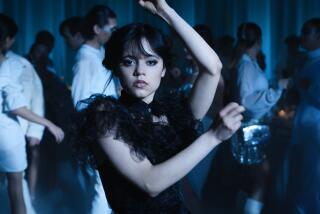Cap-and-Gown Supplier Girds for Busiest Season
- Share via
CHAMPAIGN, Ill. — President Reagan and basketball star Kareem Abdul-Jabbar are among the most famous customers of Collegiate Cap & Gown, but it is the regular clientele--1.75 million graduates a year--who really keep the company busy.
Collegiate, the nation’s largest supplier of such garb, will outfit anyone from a 2-foot-8 kindergarten student to a 7-foot basketball player, said production manager Thomas R. Williams.
But there are worries. Will the caps and gowns fit? Do the colors match? What condition will the rental sets come back in?
“I cringe every time I see all those caps come off and get tossed into the air,” said Williams. “The stiff mortarboard could hurt someone, and I know I’ll have to repair all of them when they come back.”
He now has a solution for schools with a tossing tradition: mortarboards--the square, flat-topped graduation cap with a tassel--made from foam instead of cardboard.
Important to Parents
This, obviously, is the busiest season for Collegiate, and thousands of graduation robes hang from a ceiling track waiting for the Class of ’86. Every day, the company ships from 20,000 to 40,000 cap-and-gown sets to students across the United States and in a few foreign countries.
“It’s especially important to parents,” said Williams. “It’s so expensive to send your son or daughter to school, you want to see them participate in a traditional graduation ceremony.”
The 60-year-old company rents or sells cap-and-gown sets to graduates, and also supplies thousands of robes to judges, choir members, the clergy and presidents.
Reagan and Abdul-Jabbar have used Collegiate gowns for ceremonial occasions, such as receiving honorary degrees.
It costs between $10 and $15 to rent a graduation set, and a few dollars more to buy the increasingly popular disposable cap and gown, made of less durable fabric, said Williams. A very fancy robe can cost up to $300. Up to 4,000 rental robes are sent daily to Collegiate’s huge dry cleaning plant, then inspected and repaired before they are shipped to the next customers.
Matching fabric batches for color is important but sometimes tricky.
“Reds, for example, are notorious for varying in shades,” Williams said. “If you bought 50 choir robes and lined everybody up in church and the color went from light to dark, you’d be upset.”
The company has about 500 permanent employees, in Champaign and in smaller production facilities in Arcola and Oklahoma City. There are sales and shipping centers in suburban New York and Los Angeles.
Production Facilities
In one room of the Champaign headquarters, bolts of material are stacked to the ceiling, and men using patterns and electric knives cut up to 400 pieces of fabric at a time.
Down the hall, women feed the cloth through sewing machines to create the basic gowns and robes. Others use satin and velvet trim to make hoods or construct mortarboards and tassels.
Hoods come in 400 color combinations and tassels in 800. Computer-operated monogram machines can apply virtually any initials or symbols.
Williams said 95% of the universities stick to the traditional black gowns, often using colors in the hood lining and trim to identify the school and the field.
High schools usually prefer gowns in the school colors.
Williams said most stick with one combination, but “we see a lot of color changes year-to-year on the West Coast--new trends begin in California, I guess.”
More to Read
Inside the business of entertainment
The Wide Shot brings you news, analysis and insights on everything from streaming wars to production — and what it all means for the future.
You may occasionally receive promotional content from the Los Angeles Times.










